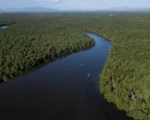At the U.N. COP16 biodiversity summit, held in Cali, Colombia, negotiations have stalled on key conservation funding issues, raising concerns over the ability to reach critical goals to halt nature loss. With nearly 40% of global tree species facing extinction due to deforestation for agriculture, mining, and infrastructure, experts warn time is running out to prevent irreversible damage.
The COP16 discussions center on implementing the 23 goals set out in the 2022 Kunming-Montreal Global Biodiversity Framework, which aims to halt and reverse biodiversity loss by 2030. A central target, known as the 30-by-30 goal, asks each country to conserve 30% of its land and ocean areas by 2030. However, current conservation efforts are significantly behind; only 17.6% of the world’s land and 8.4% of marine areas are under protection, according to the U.N. Environment Programme (UNEP).
Funding and High-Value Conservation Sites in Focus
UNEP Executive Director Inger Andersen emphasized the importance of targeting ecologically valuable regions for conservation, rather than uninhabited or low-biodiversity areas, urging that conservation areas should not just be set aside in “museums of nature.” High-priority regions, often inhabited by indigenous communities and rich in biodiversity, require focused protection.
Despite the urgency, talks are gridlocked on how to mobilize the substantial financial support needed to address global biodiversity losses, with delegates debating the creation of a dedicated fund for conservation financing. According to David Ainsworth, spokesperson for the summit secretariat, productive but challenging discussions highlight a “low level of trust” among countries, complicating efforts to reach consensus on funding and policy.
Advances in Indigenous Representation
One significant area of progress has been the near-finalization of a measure to give Indigenous groups a formal role in biodiversity governance, addressing longstanding calls for representation. Observers see this as a hopeful development, but funding commitments remain a critical litmus test for the summit’s success.
Outlook for COP16
As COP16 enters its final days, the pressure is on to secure financial agreements that will enable the rapid deployment of resources needed to meet the 30-by-30 target and other goals. If successful, the summit could set a transformative path for biodiversity conservation. However, with funding talks stalled and deadline pressures mounting, the world’s ability to mitigate the rapid decline in species and natural ecosystems remains uncertain.











